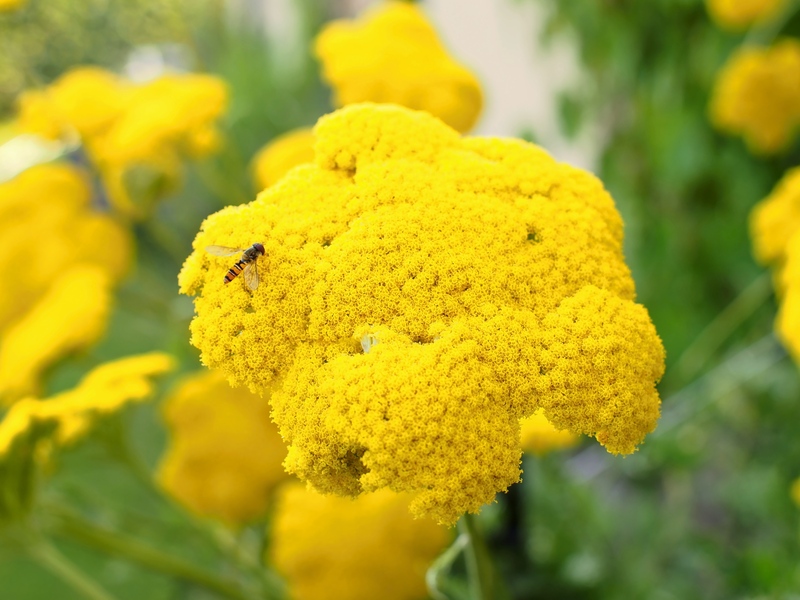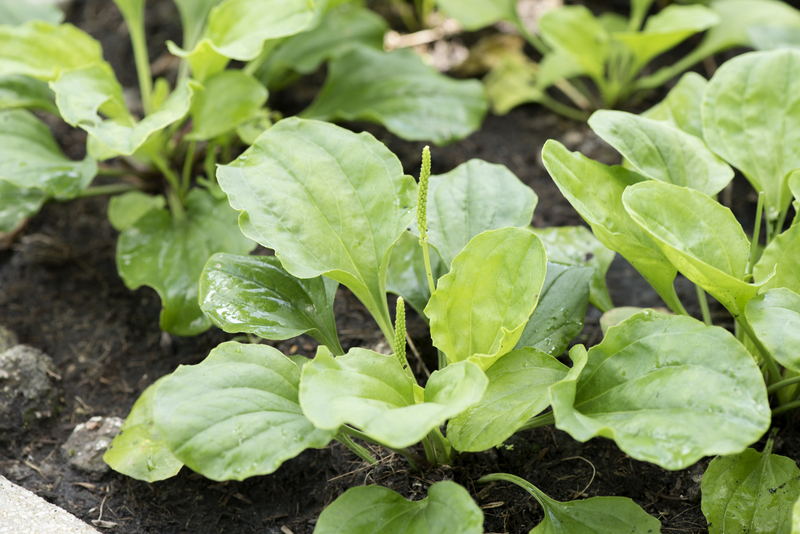Invite nature into your home with a versatile herb garden
Posted on 06/06/2025
Invite Nature Into Your Home With a Versatile Herb Garden
Herb gardens are a delightful way to bring a piece of the natural world indoors, offering both aesthetic value and practical uses. If you've ever wanted to freshen up your home, promote healthier cooking, or simply beautify your living space, cultivating a versatile herb garden at home is the way to go. In this comprehensive guide, we'll walk you through everything you need to know to create and maintain your own lush, productive indoor herb oasis.

Why Start a Home Herb Garden?
- Fresh Flavors at Your Fingertips: Cooking with herbs you've grown yourself elevates every meal.
- Nature's Decor: Lush green herbs brighten up your living areas.
- Health Benefits: Many herbs possess natural healing properties and can purify the air.
- Eco-Friendly Living: Growing your own herbs reduces your carbon footprint and reliance on packaged products.
The Allure of a Versatile Indoor Herb Garden
Bringing an herb garden into your home is about more than just growing plants. It's about embracing nature's versatility in all facets of your domestic life. Imagine plucking fresh basil for pasta, snipping mint for tea, or adding rosemary to your roast--all from the comfort of your kitchen or windowsill. With the right approach, you can even grow a range of medicinal and aromatic herbs for teas, tinctures, or homemade beauty treatments.
Choosing the Best Herbs to Grow Indoors
Not every herb thrives indoors, but many popular and fragrant varieties adapt beautifully to container life. Consider mixing and matching for a functional and decorative indoor herb garden. Here are some top choices for your versatile home herb garden:
- Basil: Perfect for countless recipes and prized for its sweet aroma.
- Mint: Hardy and spreads quickly--ideal for teas, salads, and desserts.
- Rosemary: Woody, fragrant, and robust; pairs well with roasted dishes.
- Thyme: Loves sun and is excellent for soups and stews.
- Oregano: A must-have for Italian and Mediterranean dishes.
- Parsley: Packed with nutrients and quick to sprout; garnish everything from soups to grains.
- Cilantro: Essential in salsas and curries, but prefers cooler indoor temperatures.
- Chives: Delicate, onion-scented and perfect for cutting fresh on top of dishes.
How to Start Your Own Versatile Herb Garden Indoors
Step 1: Select Suitable Containers
For a thriving indoor herb garden, your choice of containers is crucial. Use pots with adequate drainage holes to avoid waterlogging, which can kill plant roots. Get creative: clay pots, recycled jars, and hanging baskets all fit the bill and add visual interest.
Step 2: Find the Perfect Location
Most herbs require at least six hours of light each day. South-facing windows provide the best sunlight, but if natural light is limited, supplement with LED grow lights. Kitchen windowsills, balcony-ledges, and sunny nooks work beautifully.
Step 3: Use High-Quality Potting Soil
Herbs thrive in well-draining, nutrient-rich soil. Choose a premium potting mix designed for container gardens or indoor plants. Some herbs, like rosemary and thyme, prefer slightly leaner soil, so adding perlite or sand can help with drainage.
Step 4: Water Wisely
- Overwatering is the primary cause of unhappy indoor herbs. Allow the soil to dry slightly between watering.
- Check the top inch of the soil; if it feels dry, it's time to water.
- Basil and mint prefer more moisture, while rosemary and thyme like drier conditions.
Step 5: Feed and Prune Regularly
A monthly feed with diluted organic liquid fertilizer keeps herbs healthy and productive. Frequent harvesting and light pruning encourage bushier growth and prevent plants from becoming leggy.
Designing a Stylish and Functional Herb Garden
One of the best aspects of an indoor herb garden is its ability to double as decor. With a little planning, you can create a growing space that's as beautiful as it is beneficial.
Creative Ideas to Invite Nature Indoors
- Vertical Herb Wall: Attach small pots to a wall-mounted rack in your kitchen or living room. This saves space and creates a stunning green feature.
- Hanging Herb Planters: Suspend container gardens from the ceiling in front of a sunny window.
- Windowsill Herb Garden: Line up pots on your windowsill for easy access and a refreshing view every day.
- Tiered Trays: Use multi-level trays or stands to keep your herbs neat and accessible while maximizing growing area.
- Repurposed Containers: Plant herbs in teacups, mason jars, or vintage tins for a personalized look.
Pairing Herbs for Companion Planting
Some herbs grow better together, both for practical and aesthetic reasons. For example, parsley and chives are natural companions and look delightful side by side. Mint, however, is quite invasive, so it's best kept in its own pot.
The Benefits of Bringing a Versatile Herb Garden Into Your Home
Enhance Your Meals Instantly
Imagine the joy of snipping a sprig of rosemary for roasted potatoes or grabbing a handful of basil for homemade pesto. Fresh herbs add robust flavor and vibrant color to your meals, encouraging creative, healthy cooking.
Improve Air Quality
Herbs like mint, rosemary, and basil not only smell amazing but also act as natural air purifiers. Their pleasant fragrance replaces artificial air fresheners, helping you invite nature's refreshment indoors.
Create a Calming Environment
Just seeing and tending to green plants can lower stress levels and brighten your mood. Having a nature-inspired herb garden in your home creates a relaxing, lively atmosphere.
Encourage Sustainable Living
Every leaf you harvest from your indoor herb garden cuts down on single-use packaging, transportation, and waste. Growing your own herbs is a step towards a more sustainable, earth-friendly lifestyle.
Troubleshooting Common Herb Garden Challenges
A versatile herb garden at home can thrive with the right care, but even experienced gardeners run into issues. Here are some tips for overcoming common problems:
- Yellowing Leaves: Usually a sign of overwatering or poor drainage. Adjust your watering schedule and check pot and soil quality.
- Leggy Growth: Move plants to a sunnier spot or supplement with grow lights. Regularly pinch tips to encourage bushy growth.
- Pests: Wipe leaves with a damp cloth, or spray with a mixture of water and gentle soap to deter common pests like aphids or spider mites.
- Slow Growth: Herbs may need more sunlight or fertilizer. Ensure they are not root-bound, and consider transplanting to a larger pot.
Herb Garden Maintenance Tips
Keep Your Herbs Thriving Year-Round
- Rotate Pots: Turn pots every few days to encourage even growth.
- Harvest Frequently: Regular snipping promotes new growth. Always leave some leaves so the plant continues growing strongly.
- Watch for Flowering: Remove flowers as they appear to keep the plant's energy focused on leaf production.
- Repot as Needed: Upgrade pots as herbs grow to prevent them from becoming root-bound.
Ideas to Use and Enjoy Your Homegrown Herbs
A thriving home herb garden goes beyond the kitchen. Here are some creative uses:
- Infused Oils: Create aromatic oils by steeping herbs like basil, thyme, and rosemary in olive oil.
- Herbal Teas: Mint, lemon balm, and chamomile make flavorful, relaxing teas.
- Herbal Bath Soaks: Add dried lavender, mint, or rosemary to bathwater for a soothing natural soak.
- DIY Skincare: Use calendula and chamomile for homemade salves and creams.
- Decorative Bouquets: Fresh herbs add fragrance and greenery to table settings or vases.

Frequently Asked Questions About Indoor Herb Gardens
Do indoor herbs need fertilizer?
Yes, but less than outdoor gardens. Use a balanced organic fertilizer once a month for robust growth, but avoid overfeeding which can cause weak, leggy plants.
How much sunlight do most herbs need?
Most herbs need 6-8 hours of indirect sunlight daily. If that's not possible, invest in an affordable LED grow light setup.
Which herbs are easiest for beginners?
Mint, chives, basil, and parsley are generally the easiest. They tolerate a range of conditions and grow quickly with basic care.
How do I prevent pests in my indoor herb garden?
Keep your herbs healthy and inspect leaves weekly. Quarantine new plants, and use organic pest solutions if needed, like neem oil or insecticidal soap.
When should I harvest my herbs?
Harvest once the herb plant is well-established--typically when it's at least 6 inches tall--by snipping off leaves or stems. Frequent harvesting is encouraged!
Conclusion: Invite Nature Into Your Home With a Versatile Herb Garden
Creating a versatile indoor herb garden is a rewarding way to invite nature into your home, cultivate healthy habits, and elevate your space with living greenery. Whether you're a culinary enthusiast, a wellness seeker, or someone who loves bringing the outdoors in, your own home herb garden offers endless possibilities.
Start small or dream big. With the right selection, care, and creativity, you'll soon enjoy the countless benefits--and beautiful simplicity--of growing your home herb garden.
Invite nature in, and let your indoor spaces thrive.

